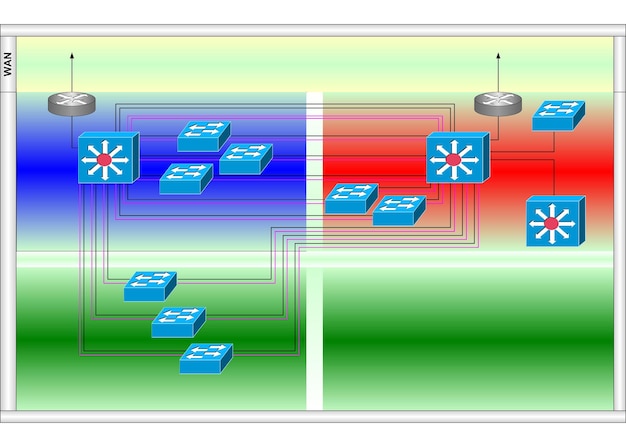Solana Network Congestion: Causes, Impact & Developer Solutions in 2025

Solana network congestion in 2025 is primarily due to increased transaction volume and network design limitations, leading to delayed transactions; developers are actively implementing solutions like localized fee markets and stake-weighted QoS to mitigate these issues.
In 2025, the Solana network congestion has become a significant challenge, impacting transaction speeds and user experience. Understanding the causes, effects, and the responses from developers is crucial for anyone involved in the Solana ecosystem.
Understanding Solana Network Congestion
Solana, known for its high throughput and fast transaction speeds, has faced periods of network congestion that lead to transaction delays and failures. These episodes raise questions about the scalability and reliability of the blockchain.
To understand Solana’s congestion, it is important to examine the specific factors that contribute to these occasional slowdowns.
Key Factors Contributing to Congestion
Several factors contribute to Solana’s network congestion. Understanding these helps see why delays occur.
- Increased Transaction Volume: High demand, particularly during NFT mints or memecoin surges, overwhelms the network.
- Network Design Limitations: Solana’s architecture, while efficient, has bottlenecks that can exacerbate congestion.
- Transaction Prioritization Issues: Without proper prioritization, all transactions compete equally, leading to delays for time-sensitive operations.
These factors, when combined, can create a perfect storm of network congestion.
Identifying the root cause is essential for developers to implement effective solutions.

Impact of Congestion on Users and Applications
Solana network congestion has consequences for the entire ecosystem, from individual users to decentralized applications.
Slow or failed transactions can erode user confidence and hinder the growth of the network.
User Experience
Poor user experience is one of the most visible impacts of network congestion. When transactions take longer or fail, users get frustrated.
- Delayed Transactions: Users experience longer wait times for transactions to confirm.
- Failed Transactions: Some transactions fail, leading to lost funds and frustration.
- Increased Costs: Users may have to pay higher fees to prioritize their transactions.
Impact on DApps
DApps on Solana are also affected by network congestion. This can lead to inconsistent performance and reduced functionality.
These issues impact overall adoption.
Addressing congestion is critical for users.
In summary, congestion leads to a degraded experience for users and hinder the performance causing significant disruption to DApps on Solana.
Solana’s Technical Architecture and Bottlenecks
Solana’s architecture, while lauded for its speed, has inherent limitations that contribute to the congestion.
Understanding these bottlenecks requires examining how Solana processes transactions and maintains consensus.
Solana’s throughput relies on specific functions which, under heavy load, become points of failure.
Key Architectural Components
Several architectural components are relevant to understanding congestion.
- Proof of History (PoH): Allows for time-stamping transactions, but it can become a bottleneck during high traffic.
- Gulf Stream: The transaction forwarding protocol, which faces challenges in managing increased workloads.
- Turbine: Solana’s block propagation mechanism, struggling to keep up with the volume of data during peak congestion.
Bottlenecks and Challenges
The key architectural components sometimes have challenges that contribute to the Solana network issues.
Identifying and addressing these bottlenecks is crucial for improving Solana’s scalability.
These issues must be resolved for long-term viability.
In short, Solana’s congestion can be traced to specific components struggling to handle congestion like Proof of History which timestamps leading to the network challenges.

Developer Responses and Proposed Solutions
Solana developers are actively working on solutions to mitigate network congestion.
These efforts include both short-term fixes and long-term architectural improvements.
The developer community prioritizes improvements to throughput and network resilience.
One method is to prioritize different transactions, giving key ones precedence.
Localized Fee Markets
One promising solution is the implementation of local fee markets. This approach allows for more dynamic pricing of transactions.
Transactions targeting congested parts of the network would have high fees. Less congested parts would have lower fees.
- Dynamic Pricing: Adjust transaction fees based on network load.
- Targeted Fees: Apply higher fees to congested areas of the network.
- Incentivize Efficiency: Encourage users to submit transactions to less congested areas.
Another approach is improving the network’s capacity to handle transactions, ensuring things run smoothly even when volume is high.
Stake-Weighted Quality of Service (QoS)
Stake-weighted QoS is another proposed solution. This system allocates network resources based on the amount of stake held by validators.
Validators with more stake are given priority.
In summary, these measures offer promising paths to mitigating congestion.
These solutions will help create a more resilient network.
Impact of Solutions on Network Performance
The proposed solutions have the potential to significantly improve Solana’s network performance.
Localized fee markets and stake-weighted QoS should improve transaction processing and reduce congestion.
It is important to assess how effective these solutions are in the long run.
Monitoring key metrics after implementation is crucial.
Expected Improvements
The expected improvements are significant and should address many of the current issues.
- Reduced Congestion: Local fee markets should alleviate congestion by dynamically pricing transactions.
- Faster Transactions: Stake-weighted QoS should ensure that important transactions do not get delayed.
- Improved Resilience: The network would be better equipped to handle unexpected surges in traffic.
However, ongoing monitoring is essential.
Developers are committed to maintaining a high-performance network.
In conclusion, these modifications promise to effectively deal with congestion while sustaining transaction speed.
Looking Ahead: Solana’s Scalability in 2025 and Beyond
Solana’s ability to address network congestion will be critical to its long-term success.
As more users and applications join the network, scalability is crucial for maintaining performance and reliability.
The advancements made in 2025 set the stage for future growth.
The network’s evolution will depend on innovative improvements.
Long-Term Vision
The long-term vision for Solana includes:
- Continuous Improvement: Ongoing optimization to enhance network capacity.
- Scalability: Adapting to meet the needs of a growing ecosystem.
- Resilience: Ensuring the network remains stable during peak usage.
By focusing on scalability and reliability, Solana can position itself as a leading blockchain platform.
In essence, solving current difficulties and fostering innovation will pave the way for expansion.
| Key Point | Brief Description |
|---|---|
| ⚠️ Network Congestion | Increased volume overwhelms Solana’s architecture. |
| 🛠️ Developer Solutions | Localized fee markets and stake-weighted QoS are proposed. |
| 📈 Impact on Performance | Aims for reduced congestion and faster transactions. |
| 🔮 Future Scalability | Continuous improvements are crucial for Solana’s growth. |
Frequently Asked Questions
▼
Solana network congestion primarily occurs due to high transaction volumes, particularly during peak events like NFT mints or memecoin trading frenzies, which overwhelm the network’s processing capacity.
▼
Congestion leads to delayed or failed transactions, increased transaction fees, and an overall degraded user experience, potentially eroding trust in the network and its applications.
▼
Developers are focusing on solutions like implementing localized fee markets and stake-weighted Quality of Service (QoS) to manage network resources more efficiently and prioritize essential transactions.
▼
Localized fee markets involve dynamically adjusting transaction fees based on the congestion levels of specific network segments, incentivizing users to transact in less congested areas and reduce overall load.
▼
Future improvements are aimed at continually enhancing the network’s capacity and resilience, ensuring Solana can efficiently handle increased transaction volumes and maintain stable performance as its ecosystem grows.
Conclusion
Addressing Solana network congestion is critical for maintaining its status as a high-performance blockchain. The solutions being developed should help alleviate these issues and create a faster, more reliable network for everyone. By tackling these challenges, Solana sets the stage for sustainable growth and continued innovation in the blockchain space.





